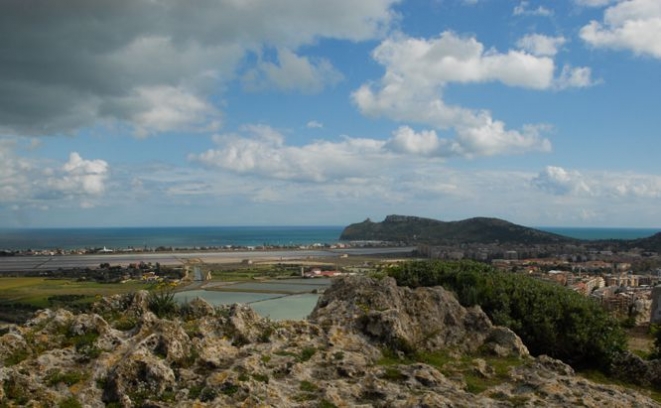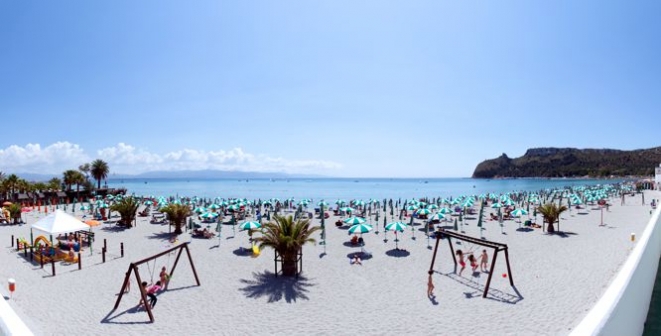The lost paradise of Poetto beach
The retraining work will restore the Poetto beach to its former glory
At the end of the Campidano plain, in the south of Sardinia, by the splendor of the Golfo degli Angeli (the Bay of Angels), there is Cagliari, the city of the sun. Who arrives from the sea sees it (OK) white and bright, thanks to the medieval walls of limestone, but also to the two ponds protecting it (OK): Santa Gilla and Molentargius that, reflecting the light, make it seem to shine on his own.
To the west, beyond the haven and the harbor that reflects the finest buildings of the city, a long stretch of sand comes across to the mountains of Capoterra. The first section is Giorgino, once the beach for election of Cagliari, now no longer viable because of the waste released from the most recent industrial activity.

Soar, at southwards, the cliffs of the Sella del Diavolo (Devil's Saddle) and cape Sant'Elia among which is embedded Calamosca beach.
To the east stand the Sarrabus mountains that slope, descending along the coastline formed by the sand of the Poetto, beach that stretches between the sea and the lagoon of Quartu.
Thirteen kilometers of beach, until recently covered by white and powdery sand downs. Then the construction of the paved road behind the sandy shore destroyed the line behind the downs, a range of spontaneous bushes that contained the downs, allowing the wind to sweep away the sand. Later, the demolition of the bathing huts, rows of exquisite Art Nouveau wooden dressing rooms, which should have deserved a careful restoration, facilitated the disappearance of sand that they could hold.

The operation of nourishment, which promised to return the beach to its former glory, has not brought the desired results. The project was to dredge the seabed at open sea and pour tons of sand on the beach. However, the sand, less eroded than the previous, presented a darker color and grains of larger dimensions. The dredgers have also destroyed the posidonia beds, endemic Mediterranean seagrass, which had the advantage of retaining the sand torn by sea storms, withdrawing the shore line.
The retraining work, began last winter, provides a traffic deviation from the road behind the sandy shore to the inlander one. But what will bring the Poetto to its former glory will be the creation of an eco-filter, which is a green area impassable, close behind the beach, where they will be planted shrub species that finally prevent the sirocco to take off the sand. It will take much time and patience, but posterity will again admire the expanse of sea lilies that covered our beach at the end of summer.